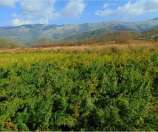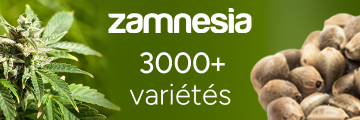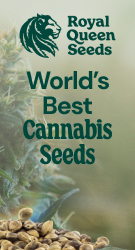Eastern Manipur-Burma
élevé par Indian Landrace Exchange
Vous trouverez ici toutes les informations sur Eastern Manipur-Burma de Indian Landrace Exchange. Si vous recherchez des informations sur Eastern Manipur-Burma de Indian Landrace Exchange, consultez L'Info Principale ou Lignée / Généalogie sur cette variété de cannabis ici sur cette page, et suivez les liens pour obtenir encore plus d'informations. Si vous avez des expériences personnelles avec la culture ou la consommation de cette variété de cannabis, veuillez utiliser les liens de téléchargement pour les télécharger dans la base de données!
Informations de l'éleveur
Eastern Manipur-Burma est une variété sativa de I.L.E. et peut être cultivée en l'intérieur (où les plantes femelles auront besoin d'une période de floraison de ±112 jours) et l'extérieur. Graines de Eastern Manipur-Burma de I.L.E. est une variété à dominante THC et ne sont pas disponibles en versions féminisées.
Description de I.L.E. Eastern Manipur-Burma

 Remote Location Near Manipur-Burma Border. approx. Lat. N° 25.09, E° 94.36 Approximately 1500 meters above the sea level (5000+ ft.) The Eastern Manipur region which Borders with Burma (Myanmar) has a lush evergreen Hilly terrain. The Hills aren't the same as the ones seen in Himalayan states such as Himachal or Uttrakhand but rather smaller and a mix of Undulating topography , Larger Hills at the periphery and a Huge expanse of plain Valleys of alluvial tracts possibly shaped by flooding of the region in the past.
Remote Location Near Manipur-Burma Border. approx. Lat. N° 25.09, E° 94.36 Approximately 1500 meters above the sea level (5000+ ft.) The Eastern Manipur region which Borders with Burma (Myanmar) has a lush evergreen Hilly terrain. The Hills aren't the same as the ones seen in Himalayan states such as Himachal or Uttrakhand but rather smaller and a mix of Undulating topography , Larger Hills at the periphery and a Huge expanse of plain Valleys of alluvial tracts possibly shaped by flooding of the region in the past.
This region is Inhabited by Tangkhul tribe a Sub division in the great Naga or (Mao) tribe.
The Mao language is classified as one of the Angami-Pochuri languages which is sub categorized as an independent dialect taking it's origins from the Tibeto-Burman languages, Which along with other evidences paints a gradual migration from Burma (Myanmar) into present Day North-East India. The Battle of Imphal during World war II very rarely if ever credit the imperative role of these Naga tribes who helped allied forces by pushing back the Japanese, which is one of the reasons these tribes afterwards were granted a special status (Article 371 A ) which allows them to bear arms along with several other rights to protect their territory. Tangkhul is one of 3 main tribes in manipur out of Meitei (Hindu) kuki and tangkhul who are mostly converted christians by the missionaries under the british colonial rule. Tangkhul people are the ones doing the mass production around the ukhrul district that borders with burma and a few kuki tribes as well however this region is dominated by tangkhul tribe while kuki tribes are more concentrated towards churachandpur, sikul and metei people living mostly in and around the capital imphal which is also strongly suggest a social and economic status amonst the tribes.
Manipur in General has a tropical to Subtropical climate for most of the year except the winter months when the rainfall finally takes a break after an Avg. 2000+ mm precipitation during the Summer and extended monsoons.
The climate in manipur is affected tremendously by the taller mountains surrounding from the bordering states like Assam and Nagaland. Even though it doesn't ever get as hot as North or central India but the winter temperatures can still fall below 10°C during Dec-Jan which is quite similar to North Indian states like punjab featuring a temperate climate. The acute levels of Humidity from the heavy rainfall is a Huge factor in shaping the vegetation around Manipur, The hills maintain a lush green colour all year around with only a very few varieties of trees showing Typical Fall colours which are dotted in the middle of a sea of green on the hills. Large Banana plantations can be seen thriving on the hill slopes along with Endless poppy fields and countless other plant species expressing larger leaf surface than normal e.g. Castor.
The farmers specifically from this region near the Eastern Manipur-Burma border grow cannabis all around the year thus creating a perpetual harvest like situation. Manipur is located roughly between 24-25°N and undergoes a considerable amount of change in the light hours through summers to winters, however it doesn't snow in the winters and temperatures lurk around 10-15°C which paves the way for a possibility of multiple crops all 12 months. The seeds sown around Spring and early summers get a full season and grow tall around 10-11 ft. Although the seeds sown later in the summer stay around a medium stature of 6-7 ft and finally winter sown crops flowers out really small about 4-5 ft avg. Population height since it goes straight into flowering without any veg. Time at all. The tremendous pressure for evermore production of black market cannabis in an overpopulated country is driving these changes from region to region.
However, both the winter and the late season (july -august) crops yield considerably lower compared to the prime crop sown with the season but the farmers are happy to take a small dip in the weight instead of waiting through a mild winters without any harvest.
The price of mass processed material when taken off the farms is less than $10/Kilo with absolutely no hope of any hike. It leaves no other option for the farmers but to resort to producing more by planting throughout the year and selling a larger qty. Overall to make things work.
The Full season crop, which is sown at the beginning of the summers or in mid to late spring. This particular crop goes through a normal life cycle and only begin to flower around August after at least 3 months of vegetative growth.
These crops can get big, upto 10-11 ft tall with heavy lateral branching even without any stress training. Without any interference the plant instead of taking a christmas tree like shape grows considerable side branches that are equally robust as they're plentiful. The full season crop brings in more weight than other two put together which makes it their prime crop and they only harvest these plants when they're fully ripe around the end of January.
The plants boast a beautiful combination of lush green leaves with vibrant purple-blue streaked floral bracts packed together like an architectural masterpiece. We selected a few different variations in terms of structure but every sample expressing the similar streaks of colors flowing through the flowers. The smell is very uniform amongst the domesticated heirloom population in this region which closely resembles a complex of caramelised paste of sun dried berries such as blueberry, dried date fruit jam. The captivating blue-purple streaks on the floral bracts could be seen as one of the common traits amongst the domesticated populations even grown at various times of the year. The Domesticated Heirloom expresses long sleeve like colas with chunky bracts covered in resin and vibrant hues that appear in a peculiar way. It yields heavily due to it's structure that features aggressive lateral growth Naturally without any stress training.
A considerable amount of plants had flowers that look similar to this (Chunky floral bracts with purple bluish streaks on the seams) within each population i.e. - sown with season after spring, during late season (late july-Aug) and finally winter. This trait was easy to find and with a sample size as large as we had at our disposal at manipur it was abundantly clear that this variety has been selected and domesticated over many generations by the naga tribes like Tangkhul which was later confirmed by the farmers who own the production field.There were a few variations in the arrangement of the flower clusters but all unique and beautiful in their own right. Thanks to the very easy going folks at the farm who let us document these plants at ease with all the peace of mind in the world.
The fresh resin from a very unlikely source like a stick which was being used to beat and flatten the cannabis crops at the farm, yielded a good chunk for sampling the resin.. The effects were quite overwhelming in a way that it immediately buckles around the forehead and induces alertness with a heightened sensitivity towards the sounds from the surroundings. The Effects last for a considerable duration i.e. easily over an hour and intensifies gradually through the first half creating an overall dreamy surreal high with a prominent massage like feeling around the forehead. Subjectively the effects are very immersive and engaging, often putting mind on thought trains in many directions.
At the pinnacle of Its potential the possibilities seems to be endless in this domesticated Heirloom variety. While the trichome size is smaller compared to many other North Indian varieties like Kashmiri or Even varieties from Himachal Pradesh the High or the effects on the other hand are much more intense in comparison to any other variety from Northern India. The Flavours are different though it's basically on a sweeter tangent but in a different way the smell resembles dried berries and date fruit paste. The flowering duration is much longer than highland varieties from north India and stretches upto 16+ weeks with a few early plants finishing around 14-15 weeks.
Aucune description française bon jusqu'à maintenant!
Eastern Manipur-Burma Lignée / Génétique
- Eastern Manipur-Burma »»» Manipuri Landrace Eastern Manipur
- Manipuri Landrace Eastern Manipur »»» Sativa
Carte de l'Arbre Généalogique de Eastern Manipur-Burma
Voir à tous les parents de Eastern Manipur-Burma dans notre carte dynamique
Envoyez votre info sur cette variété ici:
Savez-vous quelque chose de plus sur Eastern Manipur-Burma de I.L.E.? Aidez s'il vous plaît à améliorer cette base de données et téléchargez / connectez vos informations ici!
Photos
Photos plus éloquents que les paroles. Eastern Manipur-Burma Envoyez vos Photos aidera les autres producteurs à obtenir une meilleure idée de cette variété.
Comparaisons
Vous avez cultivé Eastern Manipur-Burma avec une autre variété? S'il vous plaît ajouter une comparaison directe ici.
Recension de Variété
Nos revues sont multilingues et peuvent etre tres detaillees, y compris des donnees sur la culture, l'arome, les effets et le gout! S'il vous plait Eastern Manipur-Burmatelechargez votre avis pour ici pour aider les autres utilisateurs de seedfinder!
Valeurs Pharmaceutiques
Vous avez de l'expérience avec les qualités médicales de Eastern Manipur-Burma? Partager vos informations ici peut peut-etre aider d'autres personnes!
Threads
Vous etes tombe sur info lie a Eastern Manipur-Burma dans une communaute en ligne? Connectez le fil de discussion ici pour permettre aux autres utilisateurs de trouver cette information rapidement et facilement!
Vidéos
Vous avez trouve une video connexe contenant des info supplementaires ou sur le developpement de Eastern Manipur-Burma sur YouTube? Veuillez le connecter ici pour aider les autres a le trouver facilement!


